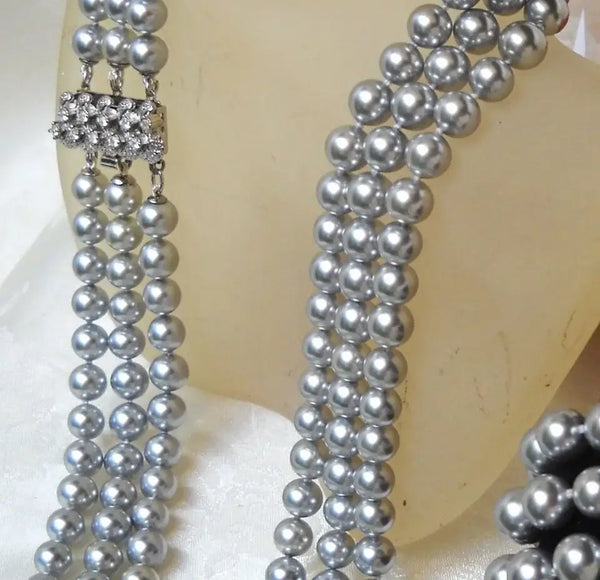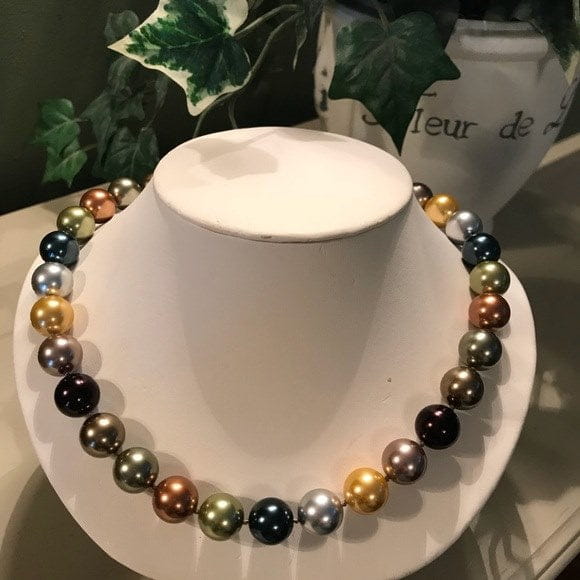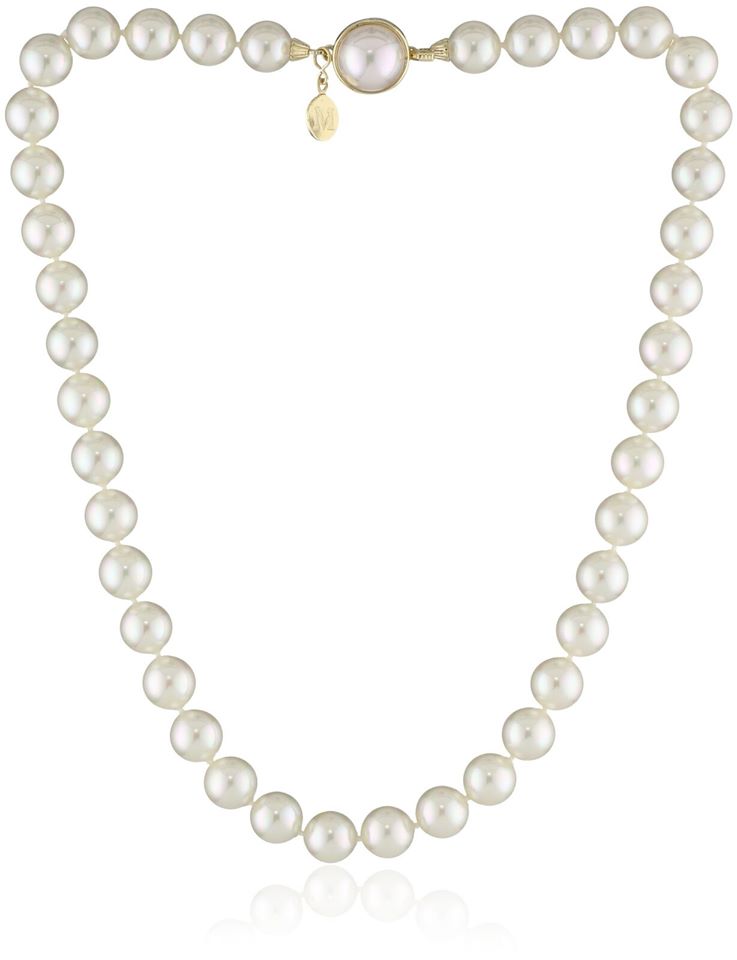
The Second Test - Friction
Many suggest trying the "tooth test," where you run a pearl along the front surface of your upper incisors. However, I'm always against this test simply for hygiene reasons. God knows who has touched the pearl before you and what they did with those hands. I always recommend merely rubbing a pearl against another pearl. Do this carefully, as pearls are soft material (rated 3-4 on the Mohs hardness scale), and they can easily be scratched by any sharp object.
What you'll feel with light rubbing, if the pearl is real, is a "sandy" texture, something akin to fine-grained sandpaper; this texture is a result of thousands of microscopic layers of aragonite (crystalline) plates, layered one on top of the other, creating a microscopically rough top layer.

Artificial pearls are smooth, as they lack these crystalline plates, and they will "slide" past one another.
The friction test isn't definitive at 100%, but it will point you in the right direction! In any case, if the pearls slide smoothly past each other, it's either imitation or real pearl coated with lacquer (which is not good, and you certainly don't need it!).
What Common Features Do All Fake Pearls Share?
Common characteristics of (almost) all synthetic pearls are smooth surfaces.
Frequent unnatural colors are found, ranging from ruby-red to resinous, lettuce, sapphire, and purple.
Artificial pearls hardly have overtones because they lack layers of crystalline plates (real pearls are created by depositing layers of aragonite plates - 5-7 layers a day, over a year to seven or eight, depending on the type of pearl). However, some of them will have an artificial iridescence. It's relatively easy to detect; it will look "oily" to the eye and excessively intense. Where cultivated pearls differ with a soft shimmer, the iridescence of synthetic pearls may appear oversaturated in color.
Currently, there are usually three main types of synthetic pearls on the market (although new, difficult-to-identify and non-branded forgeries from Chinese manufacturers are continually being introduced to the market).

But at least a few common imitations that you should know about include:
- Majorica Pearls
- Shell Pearls
- Swarovski Crystal Pearls
Knowing how to distinguish real pearls from artificial ones is essential, especially in today's market flooded with numerous fakes. The next time you're out shopping for that beautiful piece of pearl jewelry, remember these tests and observations to make an informed and confident purchase.
Always trust your eyes, the details, and don't hesitate to consult with an expert if you are unsure.
To be continued...
Happy pearl hunting!

